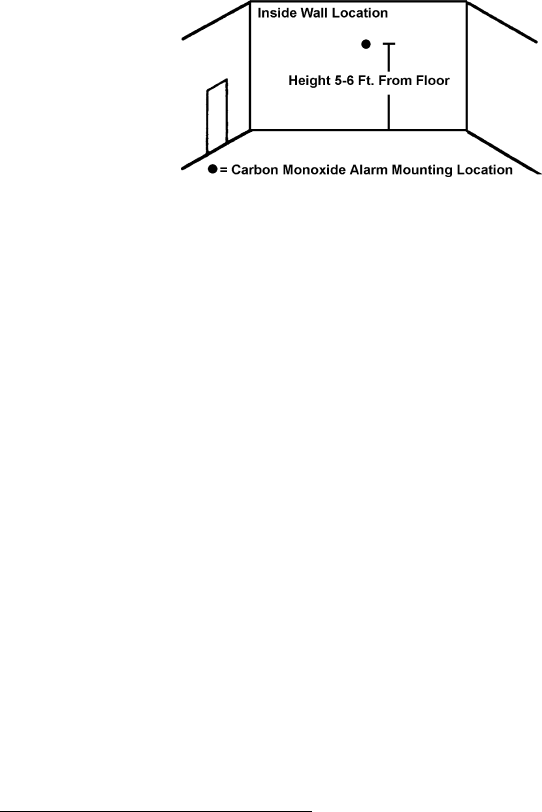
MOUNTING LOCATION
This CO alarm can be mounted on the wall or ceiling.
WALL LOCATION: Locate the top of the alarm not more than 6 feet from the floor.
CEILING LOCATION: Alarm should be mounted as close as possible to the center of a hallway or
room. If this is not possible, the edge of the alarm should be at least 4 inches from any wall.
Page 3
LOCATIONS TO AVOID
Nuisance alarms are caused by placing alarms where they will not operate properly. To avoid nuisance
alarms, do not place alarms:
Within 5 feet (1.5m) of any cooking appliance.
Near an open window or door, because the fresh air entering the opening may delay CO from
reaching the alarm.
In damp or very humid areas or next to bathrooms with showers. Install alarms at least 10 feet (3m)
away from bathrooms.
In very cold or very hot environments or in unheated buildings or outdoor rooms where the temperature
can go below or above the operating range of the alarm. Temperature limits for proper operation
are 40
o
-100
o
F (4.4
o
-38
o
C).
Good ventilation is recommended when household cleaning supplies or similar contaminants are
used.
Excessive spillage or reverse venting of fuel burning appliances caused by outdoor ambient conditions,
such as:
Wind direction and/or velocity, including high gusts of wind. Heavy air in the vent pipes (cold/
humid air with extended periods between cycles).
Negative pressure differential resulting from the use of exhaust fans.
Simultaneous operation of several fuel burning appliances competing for limited internal air.
Vent pipe connections vibrating loose from clothes dryers, furnaces, or water heaters.
Obstructions in or unconventional vent pipe designs which can amplify the above situations.
Extended operation of unvented fuel burning devices (range, oven, fireplace, etc.)
Temperature inversions which can trap exhaust gasses near the ground.
Car idling in an open or closed attached garage, or near a home.
What Levels of CO Cause an Alarm?
Underwriters Laboratories Inc. UL2034 defines three specific alarm points by which all residential CO
alarms must alarm. They are measured in parts per million (ppm) of CO over time (in minutes).
UL2034 Required Alarm Points:
_ If the alarm is exposed to 400 ppm of CO, IT MUST ALARM BETWEEN 4 and 15 MINUTES.
_ If the alarm is exposed to 150 ppm of CO, IT MUST ALARM BETWEEN 10 and 50 MINUTES.
_ If the alarm is exposed to 70 ppm of CO, IT MUST ALARM BETWEEN 60 and 240 MINUTES.
FIGURE 3









